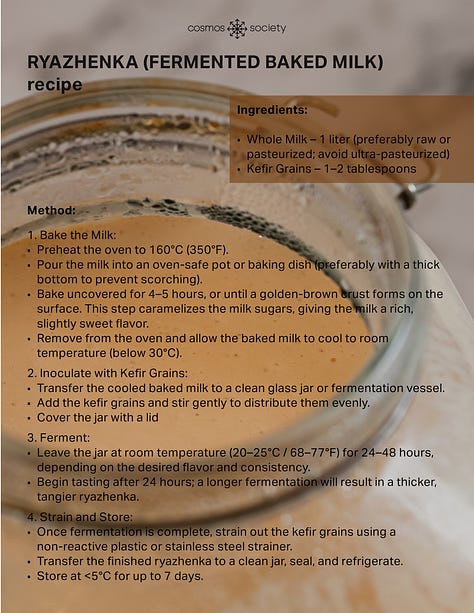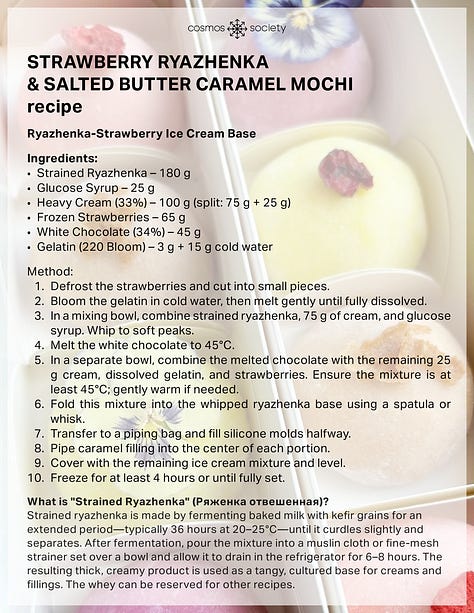Fermentation in Desserts – A New Era of Flavor and Texture
A short guide to fermented sweets and foams - simple recipes and big flavors
The Fermentation in Desserts guide is now out—a practical, recipe-driven resource that invites both beginners and professionals to explore how fermentation can redefine sweetness, texture, and depth in modern dessert and cocktail creation. Born out of a collaborative workshop between pastry chef Irina Koroleva and fermentation revivalist Denis Pashkov, this booklet captures the excitement and potential of bringing fermentation techniques into the pastry kitchen.
At its core, Fermentation in Desserts bridges the gap between pastry artistry and microbial science. Each recipe is crafted to show how living cultures—when handled with care—can elevate familiar formats like foams, fillings, gels, and confections. This isn’t fermentation for the sake of novelty; it’s about building better flavor, enhancing structure, and inviting new, complex dimensions into desserts that still feel indulgent and recognizable.
The guide features a focused yet versatile collection of recipes that can be used across pastry, plated desserts, and cocktail programs. It opens with Amazake, a naturally sweet, enzyme-rich rice ferment made using koji. From there, amazake becomes the base for two signature applications: the Cherimoya Amazake Zephyr, where enzyme activity and fruit acidity help create a lighter, brighter version of the traditional fruit marshmallow, and the Pepsi Cherimoya Amazake Espuma, a playful yet technically precise foam that balances sweetness, acidity, and carbonation with depth from cherimoya and flat cola.
The guide also introduces Ryazhenka, a slow-baked cultured cream (or milk) with caramelized notes and gentle tang—bringing a comforting, nostalgic element to the fermentation lineup. It becomes the heart of the Strawberry Ryazhenka & Salted Butter Caramel Mochi, a standout dessert that combines chewy texture, subtle lactic acidity, and rich caramel made with cultured butter. The butter itself is made by churning fermented baked cream, offering a nuanced alternative to traditional plain butter and adding another layer of fermentation to the final dish.
What makes this booklet stand out is its clarity and adaptability. Whether you’re piping zephyr or blending amazake into a cocktail syrup, the techniques are approachable, the ingredients are relatively easy to source, and the fermentation steps are well explained. It’s a toolbox meant to inspire exploration—not overwhelm.
Fermentation in Desserts invites readers to see microbes not as an obstacle to precision, but as collaborators in flavor. With careful timing and thoughtful pairing, fermentation becomes a natural extension of pastry craft—offering softer sweetness, longer finishes, and textures that simply can’t be achieved through conventional means.
Now available as a limited digital release, this guide is an invitation to rethink what dessert can be when it’s alive.









connect with us on Instagram:
Denis Pashkov
cosmos society



